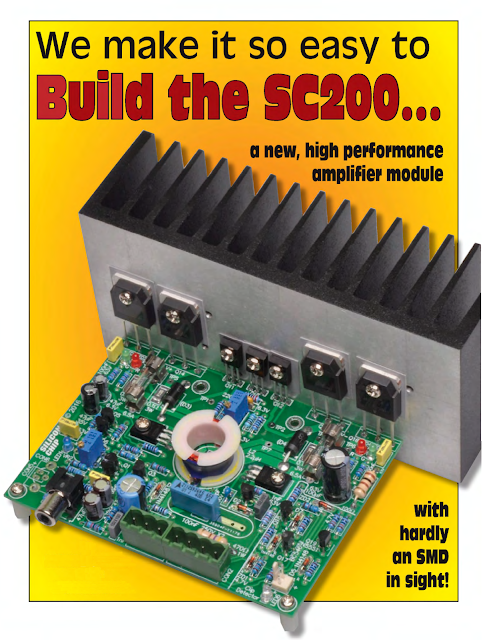Vintage Radio PYE 1951 5 valve page 2
For previous parts of the article, must see page 1 here.
Chassis restoration
Superficially at least, the radio looked reasonably serviceable as it came to me. The speaker had obviously been replaced at some time in the past, because the Plessey brand did not appear until the 1960s, well after the set had been manufactured. The replacement speaker was also a twinsiliconchip.com.au cone type which made it all the better for quality though not authenticity.
A couple of problems were also immediately evident. First, the wiring to the grid cap of the 6U7 was in rather a poor state and would have to be replaced. In addition, the external insulation on the mains transformer had broken away, exposing the low voltage filament winding.
Removing the chassis exposed further problems. The first thing I noticed was that it was covered in a uniform brown staining that was particularly evident on the plates of the tuning gang. This radio had obviously spent quite some time absorbing nicotine in a household of smokers.
The nicotine staining was so pervasive and intractable to mild cleaning that it was a job for degreaser.
First, the valves were removed, the loudspeaker detached and the mains transformer water-protected by covering it with plastic wrap. The chassis was then judiciously sprayed with degreaser, brushed clean with water and thoroughly dried with compressed air.
The plates of the tuning gang emerged from this process positively gleaming. Many corrosion spots were then removed from the steel chassis by scouring with steel wool, taking care to blow debris away. The speaker was kept well away during this process, as iron particles will attach themselves tenaciously to speaker magnets.
Looking under the chassis revealed that most of the original paper capacitors had already been replaced, so that was a good start. One paper capacitor still in place was the 0.05µF cathode bypass on the 6U7 valve. Unfortunately, it blocked access to the lead to the 6U7's grid cap. Removing it allowed the grid cap lead to be replaced, after which the capacitor was replaced with a modern equivalent. Any remaining paper capacitors were also replaced.
Next, I removed the knot restraining the mains cord and fitted a proper chassis clamp. I then powered the set up and with no valves in place, it consumed 7W. What's more, the two dial lamps lit up as expected and the transformer remained cool, so the initial indications were promising.
It's interesting to note that the dial lamps are powered from a 5.9VAC tap on the 6.3VAC filament winding.The lamps themselves are specified as 6-BV types, so operating them at 5.9VAC should result in good lamp life. Although nominally 6.3VAC, the measured filament voltage was in fact 6.5VAC, no doubt due to the fact that the set was originally designed for a 230VAC input.
At this point, the valves were installed, the speaker reconnected and the set powered up again. I was optimistic that it would work but unfortunately, I was unable to tune any stations and only crackling noises came from the speaker.
Some gentle prodding soon pointed to the 6AV6 valve as the source of the crackling. It was making intermittent contact with its socket and after cleaning the valve pins the crackle went away. However, I was still unable to tune any stations across the band. It was then that I realized that the wave-change selector switch was set to the lowest of the shortwave bands.
I rotated the switch to the broadcast band and the set came to life. It performed quite well, the only problem being intermittent changes in the volume. This problem was quickly traced to a dry joint in the negative feedback connection at the output transformer's secondary and fixed.
Superficially at least, the radio looked reasonably serviceable as it came to me. The speaker had obviously been replaced at some time in the past, because the Plessey brand did not appear until the 1960s, well after the set had been manufactured. The replacement speaker was also a twinsiliconchip.com.au cone type which made it all the better for quality though not authenticity.
A couple of problems were also immediately evident. First, the wiring to the grid cap of the 6U7 was in rather a poor state and would have to be replaced. In addition, the external insulation on the mains transformer had broken away, exposing the low voltage filament winding.
Removing the chassis exposed further problems. The first thing I noticed was that it was covered in a uniform brown staining that was particularly evident on the plates of the tuning gang. This radio had obviously spent quite some time absorbing nicotine in a household of smokers.
The nicotine staining was so pervasive and intractable to mild cleaning that it was a job for degreaser.
First, the valves were removed, the loudspeaker detached and the mains transformer water-protected by covering it with plastic wrap. The chassis was then judiciously sprayed with degreaser, brushed clean with water and thoroughly dried with compressed air.
The plates of the tuning gang emerged from this process positively gleaming. Many corrosion spots were then removed from the steel chassis by scouring with steel wool, taking care to blow debris away. The speaker was kept well away during this process, as iron particles will attach themselves tenaciously to speaker magnets.
Looking under the chassis revealed that most of the original paper capacitors had already been replaced, so that was a good start. One paper capacitor still in place was the 0.05µF cathode bypass on the 6U7 valve. Unfortunately, it blocked access to the lead to the 6U7's grid cap. Removing it allowed the grid cap lead to be replaced, after which the capacitor was replaced with a modern equivalent. Any remaining paper capacitors were also replaced.




Comments
Post a Comment